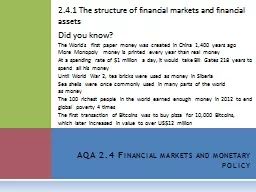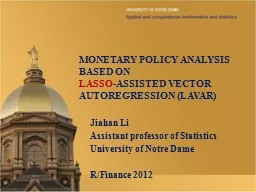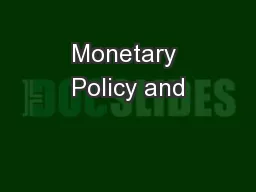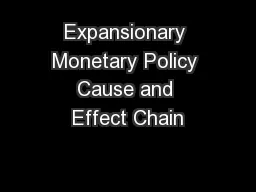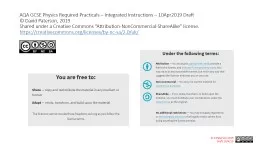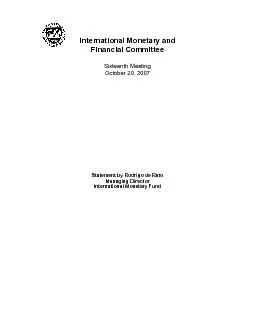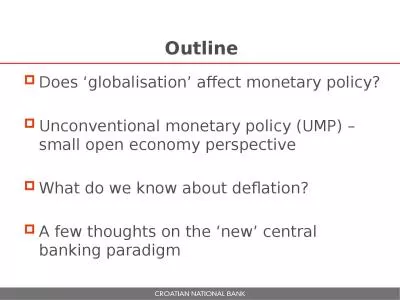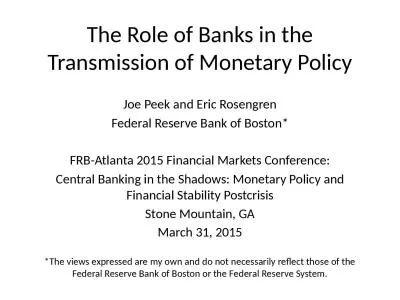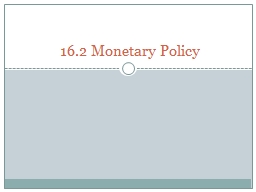PPT-AQA 2.4 Financial markets and monetary policy
Author : calandra-battersby | Published Date : 2017-04-05
241 The structure of financial markets and financial assets Did you know The Worlds first p aper m oney was created in China 1400 years ago More Monopoly
Presentation Embed Code
Download Presentation
Download Presentation The PPT/PDF document "AQA 2.4 Financial markets and monetary p..." is the property of its rightful owner. Permission is granted to download and print the materials on this website for personal, non-commercial use only, and to display it on your personal computer provided you do not modify the materials and that you retain all copyright notices contained in the materials. By downloading content from our website, you accept the terms of this agreement.
AQA 2.4 Financial markets and monetary policy: Transcript
Download Rules Of Document
"AQA 2.4 Financial markets and monetary policy"The content belongs to its owner. You may download and print it for personal use, without modification, and keep all copyright notices. By downloading, you agree to these terms.
Related Documents

